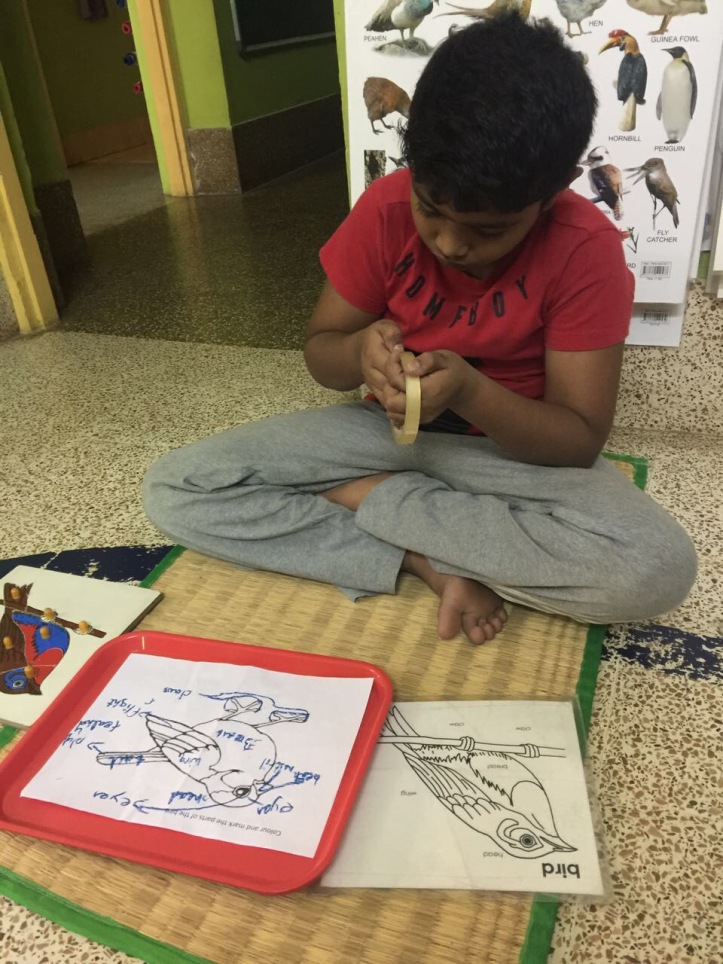Following the lessons on general characteristics of the birds, we give the lessons on parts of the bird as follows….
- Body: The body of a bird is covered in feathers. The feet and legs of a bird are covered in scales
- Head: The head of the bird is attached to the body with neck which allows the head to move independently over the body. The crown or top of the birds head may be decorated with coloured feathers called crest to attract a mate.
- Beaks: Birds don’t have teeth to chew their food but use their beak to tear the food.The shapes of the beaks vary according to the feeding habits of the bird. (cone shaped beak for cracking seeds ex. Goldfinch bird, tubular beak of humming bird is for sipping nectar from flowers, long chisel like pointed beak of flicker bird is for eating insects, strong, hooked beak of hawk is for tearing flesh)Show the picture of bills tell how a bird feeds from encyclopaedia Britannica.

- Nostrils: Birds breathe through the two nostril openings on the beak, but they can’t smell.
- Eyes: The eyes have three eyelids and are placed on either side of the head. The bird must turn its head to change the field of vision. Birds have excellent eyesight and can see much better than humans.
- Wings: wings of the birds are modified forelimbs and enable the birds to fly high. Some birds use their wings to move through water.
- Feet: Feet of the birds are covered with scales. Birds grasp things with their feet. And also use their feet for standing, running, swimming, landing and taking off.
- Claws: The feet of the birds have claws at the end to grip a branch or scratch the ground.
- Tail: The tail of the bird is covered with tail feathers and it provides lift for flight. And also helps to steer the direction of a birds flight.
 Bird puzzle and control chart from kidken
Bird puzzle and control chart from kidken

 Parts of the birds cards from waseca biomes
Parts of the birds cards from waseca biomes
And the story of egg is told finally…
The mother bird builds nest using things like hay, twigs, yarn, grass, mud, feathers etc to lay eggs and incubate them. Later the mother bird takes care of the baby bird by feeding them till they are on their own. Most of the birds choose trees to build their nest but some build nest on ground or even any part of our house. Not every bird makes a nest for its eggs, but most of them do. People also love to make bird houses that can be used by the birds to lay eggs. Sample collection of various nests can be shown to the children.

The mother bird lays egg and sit on them to keep it warm (incubation period). This is the time when the baby bird grows inside the egg. All of the food it needs to grow is inside the egg. Inside the egg, the baby bird lies curled up like a ball and eyes closed. When it is fully grown, it pecks at the egg shell with its baby tooth and hatch out of the egg. The baby birds once out of the egg will be taken care by the parents by feeding them until they are ready on their own.
I use the following picture cards (incredible egg 4 h classroom curriculum guide) from oregonaitc.org to tell the story of the egg.
Parts of the egg
I teach the parts of the egg to the elementary kids. I use the following egg quiz cards from (incredible egg 4 h classroom curriculum guide) from oregonaitc.org to teach the parts of the egg.

And We named the various parts of the egg with labels as we learnt about them. The children were given chance to write the names for labelling and they were very excited to find the air cell in the shell of boiled egg and finally everyone enjoyed eating a boiled egg.
We arrange bird visits to school every year to go with our birds lesson. We had chicken family visit (rooster, hen and chick), parrots visit, mynah visit. And this year we had love birds visit to our environment.

And the lessons are always more fun with crafts, following are the various crafts that we have tried along with our birds lessons.
And that’s our birds lessons in total.




Very detailed explanations and awesome pictures, keep up the good work!
LikeLike